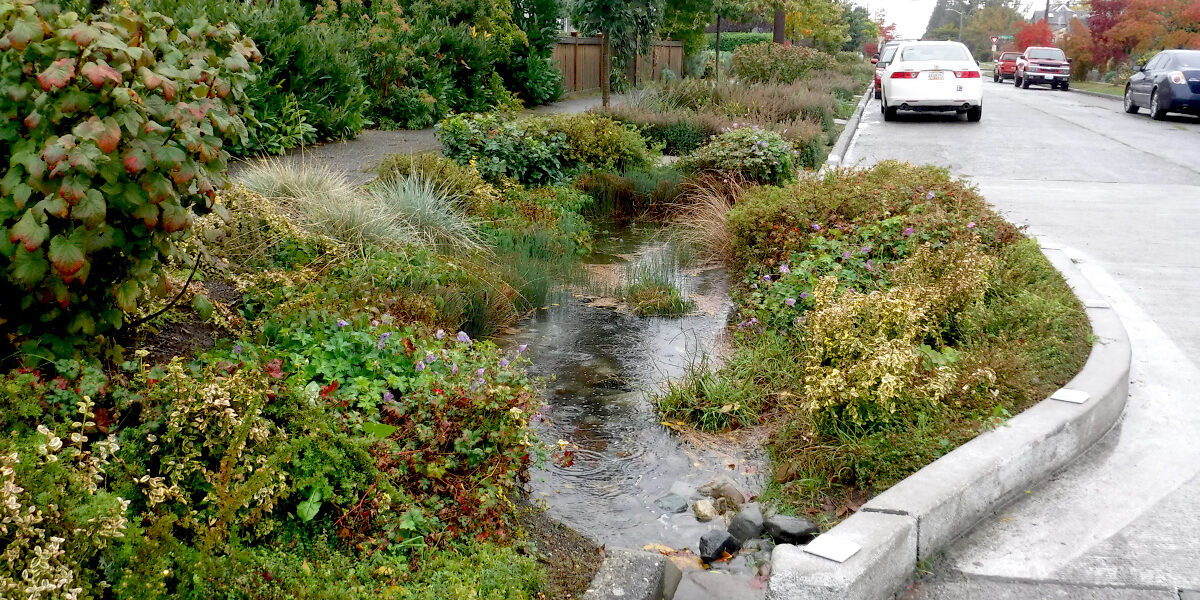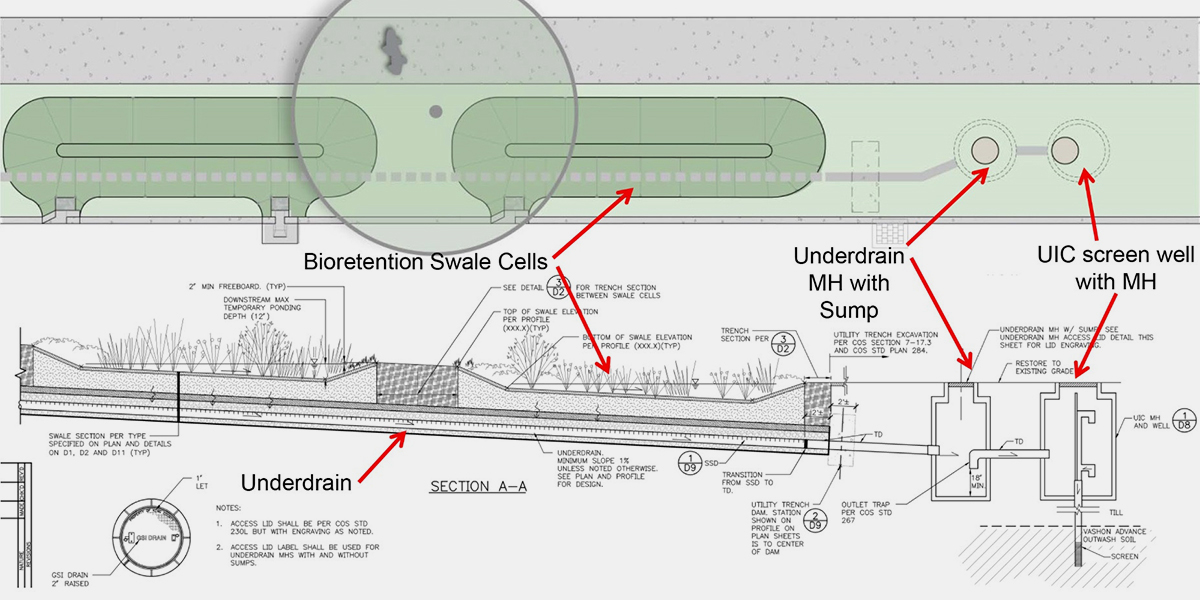Every year, about 4 million gallons of polluted runoff—raw sewage and stormwater—entered Puget Sound from an overflowing combined sewer system near popular Lincoln Park in Seattle.
The King County Wastewater Treatment Division analyzed several green and gray solutions. The usual gray infrastructure solution would have been a huge underground storage tank. But that would have meant acquiring land and/or space in the street right-of-way—it was costly and still entailed risk. Instead, the County’s green infrastructure solution enhanced the green space of residential streets and didn’t require any mechanical or electrical systems to operate during rain events.
The County retrofitted the planting strips with 93 bioretention cells—highly engineered roadside rain gardens with native and drought-tolerant plants—to intercept stormwater on 15 residential blocks and infiltrate the filtered water within the block rather than flowing back into the combined sewer system. Unlike gray infrastructure which just temporarily retains the stormwater in large storms before sending it back into the combined sewer system and treatment plant, these facilities intercept stormwater runoff every time it rains, thus reducing the volume of water flowing to the treatment plant. It’s estimated that this diverts 6 million gallons of stormwater annually from entering the combined sewer system.
The design team evaluated 72 streets within the project area for potential roadside bioretention. In selecting the blocks, the team looked for residential non-arterial streets that were relatively flat with few driveways, and planting strips that were at least nine feet wide. We also needed to avoid utility conflicts, minimize the impact to on-street parking, protect mature trees and maximize the interception of street runoff into the bioretention cells. In some cases, the bioretention cells were retrofitted into the existing planting strip width and in other areas, curb bulbs/extensions were used to optimize the bioretention area and interception of street runoff and also provide co-benefits for traffic calming.
Usually the shallow bioretention swales include native and drought-tolerant plants and a layer of compost and sandy gravel that treat the stormwater as it percolates down into native soil. But, in this area of Seattle, the near surface soils were hard packed glacial till, not suitable for shallow infiltration. So the team’s new approach to the typical urban roadside bioretention system was an underdrain that directs water to an underground injection control screen well at the end of each block. The screen well allows the filtered water from the bioretention cells to percolate down for deep infiltration into advance outwash soils that are suitable for infiltration. The screen wells (up to 100’ deep wells) are completely accessible for maintenance and monitoring.
Since it was a new approach, the community needed some extra outreach efforts, including a project website, community meetings and design workshops, fliers and mailings. The results went beyond acceptance, to the community now finding the gardens a source of pride and enjoyment.
This was a project with many firsts: First project for the County is using green stormwater infrastructure for reducing combined sewer flows to meet Consent Decree, first to use deep infiltration screen wells in the City right-of-way and first large scale street improvement permitting in the City for the County’s Wastewater Treatment Division.
The project won the 2018 Washington State Chapter of the American Council of Engineering Companies, Best in State: Gold Award, Future Value to Engineering Profession. It also won the 2017 American Society of Civil Engineers Seattle Chapter award for Outstanding Water Project.
Read more about the project.
Kathryn Gwilym is a civil engineer with over 19 years of experience in engineering design, complete street design, low impact development, storm drainage, utility and site development, redevelopment and retrofits. She is a leader in the world of innovative storm water design for porous pavements and natural drainage.


